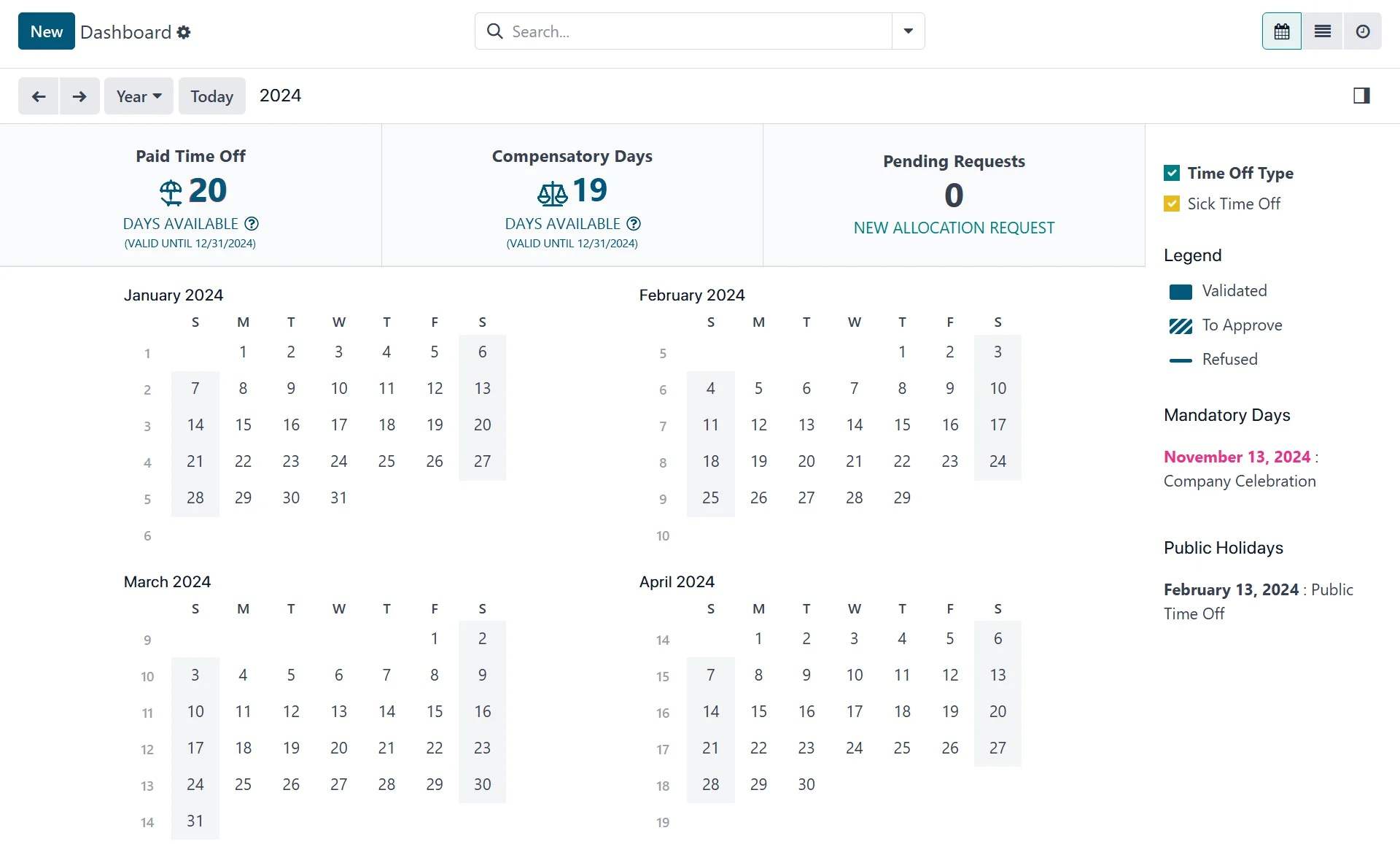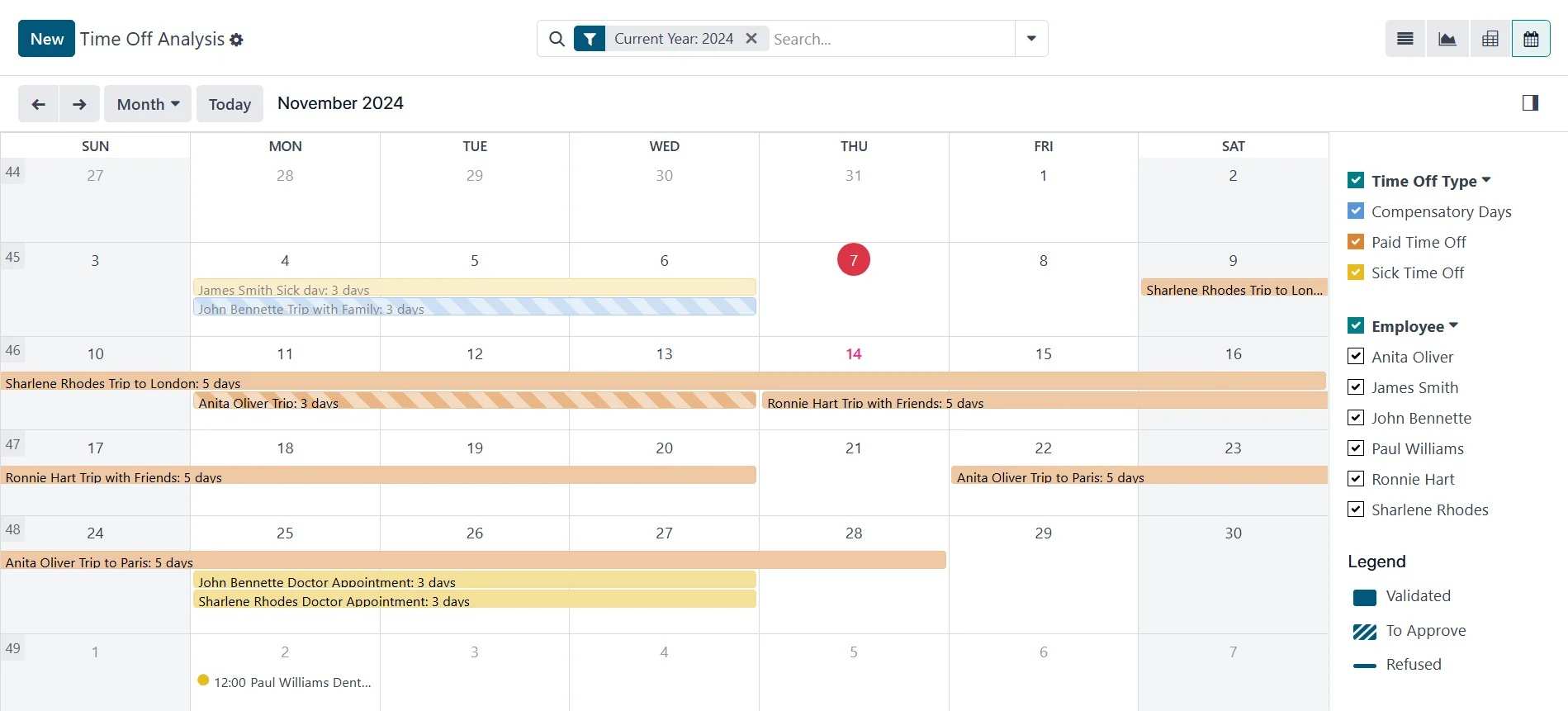Why Effective Leave Management is Important
Customer satisfaction is a priority for every organisation, but it's important to remember that employee satisfaction is crucial in ensuring business success. Unhappy employees are less productive and efficient, negatively impacting the company's performance. To maintain a happy workforce, organisations must address the root cause of employee dissatisfaction—one of which is poor leave management.

Inconsistent leave records, unapproved leaves, and unplanned absences can create mistrust between employees and employers. A good work-life balance, achieved through proper employee time off management, improves employee productivity and benefits both parties.
HR functions, such as employee leave tracking, can be time-consuming and challenging when done manually. An automated Leave Management System streamlines the process, enabling HR to efficiently allocate, approve, or deny leaves and keep track of employee absences.
In the current remote work scenario, traditional leave policies may not be applicable. Managers must implement new policies to manage employee leaves for remote teams, ensuring a smooth operation and allowing employees to recharge and spend quality time with loved ones.
Challenges in Leave Management
Leave management involves making policies, defining authorities, adhering to legal regulations, and more. Managing leave records, processing leave requests, and being compliant with policies, add to the challenges in the absence management process.
Let’s explore some common challenges that managers face:
1. Managing Leaves with Spreadsheets
Processing leave requests becomes a challenge when leaves are managed through spreadsheets. Managers need to check the employee's time off balance and the availability of other team members before making a decision.
2. Ineffective Communication of Leave Policy
Communication is crucial for a company. Employees should be familiar with the enforced leave policy, whereas oftentimes, employees are confused about their organisation’s leave policy, which is attributed to poor communication of these policies from managers. As a result, HR has to explain the policies to employees again and again.
3. Inefficient Leave Tracking
Keeping track of who is taking time off and for how long is a challenge for managers. This becomes even more complicated when each team member is entitled to a different number of leaves.
4. Issues with Workforce Scheduling
With inefficient tracking of employee leaves, proper workforce scheduling becomes a challenge for managers. It could result in many employees taking time off at the same time.
5. Poor Integration with Payroll
Leave management and payroll need to be integrated so that all calculations are reflected in the pay slips. Inefficient integration results in payroll errors or inaccurate salary calculations.
6. Report Extraction
Manually managing employee leaves doesn't allow for the extraction of required data or reports needed to support decision-making.
Best Practices for Leave Management
Adopting the best practices in leave management is imperative to strike the balance between a happy workforce and a smooth-running business. HR managers need to carefully outline policies with an empathetic approach toward employees, to empower them to take their time off while ensuring that the company’s staffing needs are met. Here are some tips as a guide to leave policy development:
1. Draft a Clear Policy
Develop a policy aligned with local labour laws, discuss it with stakeholders, and enforce it in your organisation. Clearly define leave types, mention timeframes for applying for time off and the time a manager has before responding to a leave request, and state requirements like medical certificates for sick leave.
2. Communicate Clearly
Communicate the leave policies to your employees in simple language, so that everyone can read and understand it. Ask everyone to stick to them and ensure enforcement. Awareness of the policies will foster conformity among the employees.
3. Measure Effectiveness
Once you have enforced a policy, now keep measuring the results you are getting by identifying key metrics. Update your policy to adapt to changing requirements. Ask your employees for their feedback on the policies and shape your policy accordingly.
4. Ensure Legal Compliance
In many countries, labour laws keep changing from time to time. Ensure that your company remains compliant with government regulations. Check often for changes in labour laws and change your policies accordingly, to avoid getting into legal trouble.
How a Leave Management System Helps
A smart Leave Management System is essential for effectively managing employee time off, which in turn helps retain employees and contributes to the success of a business. Here are the key reasons why your organisation needs one:
1. Boosts Productivity
Unplanned leaves can burden other employees with the workload of absent workers, leading to decreased productivity. A Leave Management System allows HR to plan shifts and allocate staff accordingly, reducing surprises and increasing overall productivity.
2. Streamlines Record-Keeping and Reporting
Keeping track of employee leave tracking can be challenging and time-consuming without a system in place. A Leave Management System automates record-keeping and enables HR to analyse leave patterns, making it easier to make informed decisions.
3. Improves Employee Satisfaction
When leave requests are denied or not managed properly, employees can feel neglected. A Leave Management System allows HR to timely manage leave requests, which can boost employee satisfaction and increase trust in the company.
4. Enhances Employee Discipline
Clearly defined leave policies and entitlements can help improve employee discipline and reduce absenteeism. With a Leave Management System, employees have a better understanding of their leave policies and are more likely to adhere to them.
5. Minimises Errors
Manual absence management is prone to human errors, which can lead to disputes. A Leave Management System eliminates errors and ensures fairness in the documentation of employee time off history.
6. Ensures Regulatory Compliance
Adhering to local labour and employment laws is crucial to avoid legal complications. A Leave Management system helps organisations comply with these regulations and protects them from potential legal troubles.
Numla HR Leave Management System
The Simple Solution for Large Businesses
The Numla HR Leave Management System is a comprehensive solution designed to simplify employee leave administration. Let’s explore why it’s an effective leave management system for large businesses:

1. Super Convenient to Manage
Say goodbye to manual records, piles of files, and maintaining complex documents. Our system offers an easy-to-use interface to manage all data with the utmost convenience.
2. Saves Time and Resources
Automation of processes, automatic updates of employee leave balances, and paid/unpaid leaves save valuable time for HR personnel.
3. Accessible from Anywhere
Our cloud-based system provides the flexibility of access from anywhere and with any device. Employees can also request leave easily through our time off mobile app.
4. Clear Communication
Foster transparency with an integrated platform that enhances manager-employee communication.
5. Customisable to Meet Your Needs
Every organisation has its unique HR requirements. Customise leave accrual for your employees and update it depending on the leave availability. The system also allows you to customise the leave policies according to your company.
6. Delegation of Teams
Managers also need to have time off. Our system allows managers to delegate their team to another manager during their time off, giving the new manager the ability to manage their team's leaves.
7. Integration with Payroll
No more payroll errors! Our leave management system integrates seamlessly with the payroll system, automatically calculating paid or unpaid leaves based on defined rules.
8. Hassle-Free Tracking of Leave History
With our solution, tracking of leave history of every employee is easy. The reports can be generated in a tabular form and presented in a well-structured format allowing you to make unbiased decisions regarding leave approvals.

9. Auto Deductions of Social Welfare
Easily manage social welfare deduction rates based on employees’ absence days or illness types. No need to worry about checking spreadsheets for the records; they will be handled by the system automatically.
In a nutshell, Numla HR’s Leave Management System ensures accurate tracking and handling of employee time off, making it a must-have for organisations aiming to enhance productivity and employee satisfaction.